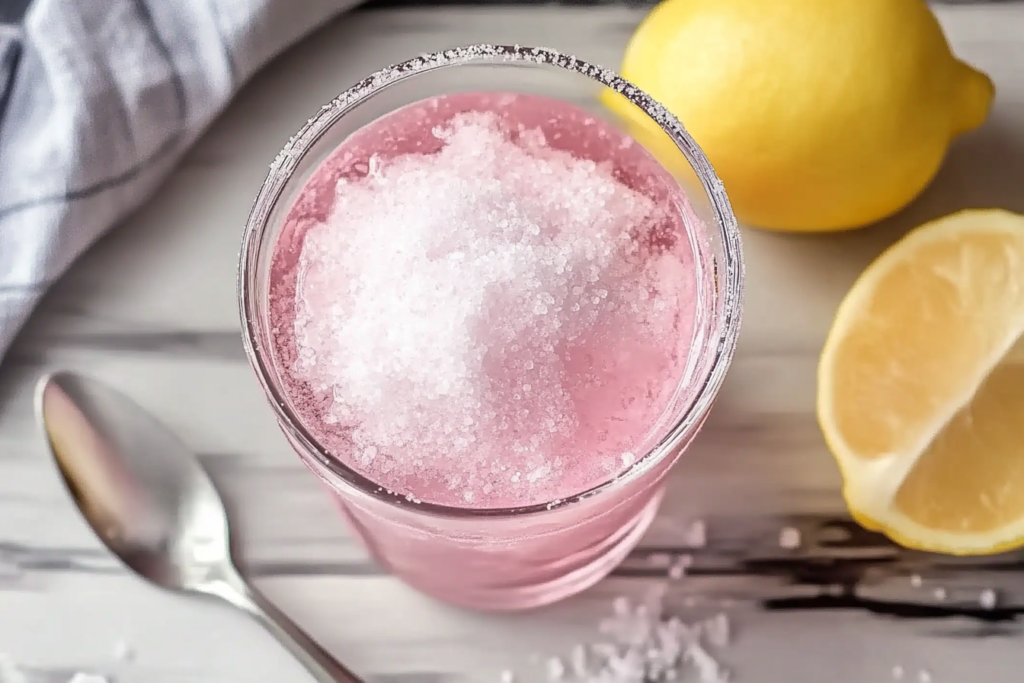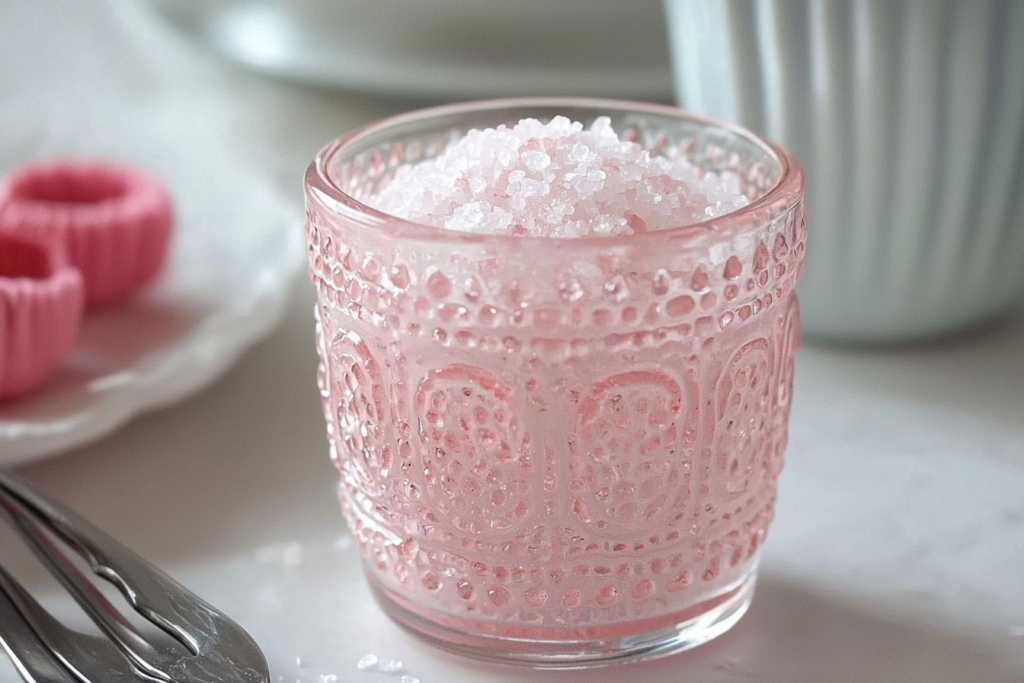If you’ve ever found yourself frustrated with dishes that just don’t hit the flavor mark, you’re not alone. Cooking can sometimes feel like a guessing game—too much salt, not enough depth, or flat results that leave you wondering if you did something wrong. What if I told you there’s a simple yet powerful technique that can transform your meals and elevate your culinary skills? This is where the pink salt trick recipe comes into play, a method that many home cooks and chefs swear by for unlocking vibrant, balanced flavors with ease.
In this guide, you’ll discover what pink salt really is, how to use it effectively in your recipes, and why this trick can make such a difference. You don’t need to be a professional chef or have fancy equipment—just a bit of know-how and the right ingredients. Let’s dive into this flavorful journey that’s about to change the way you cook forever.
Table of Contents
What Is Pink Salt? Understanding the Basics
Before you can master the pink salt trick recipe, it’s important to understand the key ingredient itself. Pink salt, often called Himalayan pink salt, is a naturally occurring mineral-rich salt harvested from ancient salt mines primarily located in the Himalayan mountains. Unlike regular table salt, pink salt retains trace minerals like potassium, magnesium, and calcium, which give it its distinctive pink hue and subtle complexity.
You might be wondering why this matters. These minerals don’t just add color; they contribute to the salt’s unique taste profile, which many find less harsh and more balanced than refined white salt. This makes pink salt a favorite among those who want to enhance their meals with something beyond the standard seasoning. Its coarse or fine textures offer versatility, whether you prefer to sprinkle it on dishes or grind it fresh at the table.
When compared to table salt, pink salt is generally less processed and free of additives like anti-caking agents. However, it’s important to note that from a sodium content perspective, pink salt is similar to regular salt. The difference lies mainly in flavor and texture.
The Pink Salt Trick Recipe Explained
So what exactly is the pink salt trick? At its core, this method revolves around when and how you add pink salt to your dishes to maximize flavor without overpowering the food. Many people make the mistake of adding salt too early or too late, which can either mute its impact or make the dish too salty.
Here’s what you need to know:
- Timing is crucial. Adding pink salt at strategic moments during cooking allows it to penetrate ingredients and enhance natural flavors gradually.
- Use the right amount. Because pink salt is less concentrated than table salt in flavor perception, you can experiment with slightly higher quantities, but caution is key to avoid oversalting.
- Pair it wisely. Pink salt works best with dishes that have fresh, natural flavors like roasted vegetables, grilled meats, and even baked goods.
By incorporating this trick into your routine, you’ll notice dishes become more layered and satisfying without any complicated seasoning blends or excessive salt.
Step-by-Step Pink Salt Trick Recipe for Beginners

Now that you understand the basics, it’s time to put the pink salt trick recipe into action. This simple recipe demonstrates the technique while showing you how pink salt enhances a basic roasted chicken dish.
Ingredients
| Ingredient | Quantity | Notes |
|---|---|---|
| Himalayan pink salt | 1 tsp | Fine ground |
| Olive oil | 2 tbsp | Extra virgin preferred |
| Fresh thyme | 1 tsp | Chopped |
| Garlic cloves | 2 | Minced |
| Chicken breasts | 4 pieces | Skinless, boneless |
Instructions
- Prepare the chicken: Pat the chicken breasts dry with paper towels. This helps the salt stick and the skin crisp better.
- Season early: Lightly sprinkle half of the pink salt over both sides of the chicken. Let it sit for 10-15 minutes. This early salting helps draw out moisture and intensify flavor.
- Mix marinade: Combine olive oil, garlic, thyme, and the remaining pink salt in a small bowl.
- Apply marinade: Rub the mixture evenly over the chicken breasts.
- Cook: Roast or grill the chicken until cooked through, about 20 minutes at 375°F (190°C).
This step-by-step approach shows how to integrate pink salt in two phases—early and just before cooking—to boost the overall taste.
Why the Pink Salt Trick Recipe Works: The Science Behind the Flavor
Understanding why the pink salt trick recipe works can help you apply it confidently across your cooking. Salt, in general, plays a critical role in flavor enhancement by influencing how your taste buds perceive food. When used correctly, salt can elevate the natural sweetness, umami, and overall balance of a dish without making it taste overtly salty.
Pink salt’s mineral content contributes subtle differences that can enhance food in ways regular salt doesn’t. For instance, minerals like magnesium and calcium interact with flavor molecules and proteins, subtly altering texture and moisture retention. This means your meats stay juicy and tender, and vegetables develop a richer taste.
Scientifically, salting meat early in the cooking process allows the salt to penetrate deeply, breaking down muscle proteins and enhancing moisture retention. The delayed addition, or finishing salt, layers a burst of immediate flavor that hits your palate with freshness. This two-step salting method, central to the pink salt trick recipe, ensures your dishes have complex flavor layers rather than just a uniform salty taste.
In fact, culinary experts recommend this approach for everything from roasting to broiling and even slow cooking. For a practical example, you can explore how this technique transforms recipes like the one shared at My Tasty Curry’s pink salt trick recipe, which offers detailed insights into using pink salt for intense flavor development. Similarly, incorporating pink salt thoughtfully into nourishing dishes such as the Turkey Bone Broth recipe showcases how salt timing affects both taste and health benefits.
Popular Variations of the Pink Salt Trick Recipe
The beauty of the pink salt trick recipe is its versatility. You can adapt the basic principles to a wide range of dishes and cooking methods. Here are some popular ways to experiment:
- Roasted Vegetables: Toss your favorite vegetables in olive oil and sprinkle pink salt before roasting. Add a finishing pinch right after cooking for a flavor boost.
- Grilled Meats: Season steaks or chicken with pink salt an hour before grilling to tenderize and enhance flavor. Add a final sprinkle as the meat rests.
- Baking: Use pink salt in bread or savory baked goods, but adjust timing to avoid over-salting the dough early on. A light dusting before baking can add a crunchy texture and subtle saltiness.
- Soups and Broths: Add pink salt gradually during simmering and finish with a pinch before serving to bring out all the subtle layers of flavor.
Try incorporating fresh herbs, citrus zest, or garlic alongside pink salt to create custom seasoning blends. These variations allow you to personalize the trick to fit your favorite cuisines and meal types.
Common Mistakes to Avoid When Using the Pink Salt Trick
While the pink salt trick recipe is simple, there are a few common pitfalls that can undermine your efforts:
- Over-salting: Pink salt’s subtle flavor can be deceptive, but it’s still salt. Use measured amounts and taste frequently, especially if adding salt at multiple stages.
- Adding salt too late: Waiting until the end of cooking to add all the salt misses the benefits of early penetration and flavor development.
- Confusing salt types: Different salts have different textures and saltiness levels. Don’t substitute without adjusting quantities accordingly.
- Ignoring moisture levels: Salting too early on wet ingredients can draw out too much moisture, leading to dryness in some recipes. Adjust timing based on the food’s water content.
Avoid these errors by following the timing and quantity recommendations carefully. This will help ensure your pink salt trick recipe produces consistent and delicious results every time.
Conclusion: Master the Pink Salt Trick Recipe to Unlock Flavorful Cooking

Now that you understand the ins and outs of the pink salt trick recipe, you’re ready to elevate your cooking with this simple yet effective technique. By learning how to use pink salt at the right time and in the right amounts, you enhance your dishes with richer, more balanced flavors. Whether you’re roasting meats, seasoning vegetables, or simmering broths, this trick helps you avoid blandness and overpowering saltiness alike.
Remember, cooking is both an art and a science. The pink salt trick bridges the two by giving you control over how salt interacts with your ingredients throughout the process. As you experiment, you’ll find your own rhythm and preferences that make your meals uniquely delicious.
So next time you cook, reach for that pink salt with confidence and put the trick into practice. Your taste buds—and your guests—will thank you.
Frequently Asked Questions (FAQ) About the Pink Salt Trick Recipe
What is the pink salt trick recipe?
The pink salt trick recipe is a cooking method where you add pink salt at specific times—both early and near the end of cooking—to enhance the natural flavors of your dishes. This technique maximizes flavor penetration while preventing over-salting.
Can I use any type of salt for this trick?
While the method can apply to other salts, Himalayan pink salt is preferred due to its mineral content and subtle flavor profile. If you substitute, adjust quantities accordingly since table salt is more concentrated.
Is pink salt healthier than regular salt?
Pink salt contains trace minerals not found in highly refined table salt, but nutritionally they are quite similar. The health benefit mostly comes from using salt mindfully, not the type alone.
How much pink salt should I use in recipes?
Start with recommended amounts in your recipe and adjust to taste. Remember that the trick involves adding salt in stages, so use smaller quantities initially and finish with a pinch.
Can I use the pink salt trick recipe for baking?
Yes! You can use this technique for savory baked goods. However, be cautious with early salting in doughs, as it affects yeast activity and moisture.
By mastering the pink salt trick recipe, you’re not just seasoning your food—you’re unlocking deeper, richer flavors in every bite. Try it in your next meal and experience the difference.

